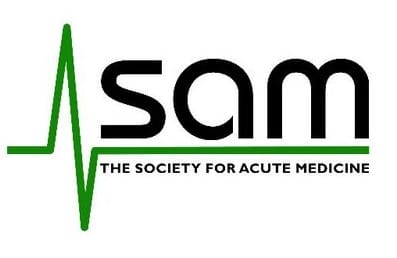04 April 2021
Senior medics have said “red flags” are showing in hospitals as non-Covid emergency attendances rise amid pressures to resume non-urgent services – all while capacity remains tight with Covid infection control measures in place.
The Society for Acute Medicine (SAM) said some emergency departments had experienced their busiest days in two years during the week as non-Covid attendances increased, stretching acute medical units which take the majority of patients directly from EDs.
Despite Covid infections continuing to fall, there is little change in Covid infection prevention measures hospitals need to take to manage risks, therefore reducing available capacity and the flow of patients.
This comes at a time when hospitals are being pushed to resume up to 70% of elective (non-urgent) services in April – which concerns medics who say urgent care is being “overlooked” despite rising urgent care demand and exhausted staff being a “significant risk factor” in any recovery plan.
“We are aware this week of hospitals having some of their busiest activity in emergency departments with non-Covid patients for two years and that is a concern as we are operating with reduced clinical space due to Covid infection control measures,” said Dr Nick Scriven, immediate past president of SAM.
“Admissions rising without any change in available capacity dramatically reduces flow through EDs and has massive repercussions on acute medical units which take the majority of ED patients on a decision to admit, with the system fallback seeming to be to just increase capacity.
“This is not a sustainable plan and trusts need to urgently look at how they can maintain and improve flow right through hospitals and not ignore urgent care while they strive to meet enforced targets on the return of up to 70% of elective activity this month.”
Dr Susan Crossland, president of SAM, said there was “much dismay” at the recently-released NHS plan to help the health service recover all patient services following the intense winter wave of Covid, with a focus mainly on non-urgent care.
“While the focus switches to a return to some sort of normality, it is important those in positions of power balance their desire to say what people want to hear with the realities of what we face and the truth is we are far from normality in the NHS and, certainly for acute and emergency medicine, everything still looks quite grim,” she said.
“The Prime Minister himself has admitted there is still the potential a third wave of Covid may come and, with the increase in non-Covid attendances in busy emergency departments this week when some restrictions were lifted, there are red flags which show this is a tightrope we are walking,” she said.
“Despite these issues, not only does the recovery plan for the NHS not go far enough in recognising the immense pressures on acute and emergency care, it focuses largely on elective care and it seems no-one can see why unplanned care could and is still failing as the number of Covid infections falls.”
She added: “If you bring staff exhaustion into the mix, which itself alone is a significant risk factor in any recovery plan as many are still covering additional wards, then this lack of understanding around where we are at in acute and emergency medicine now and going forwards reinforces it is being overlooked and that is really worrying.”
Dr Scriven said he has not seen anything in the recovery plan which will help urgent care address the year-on-year rise in system stress let alone recover from the last year, with “token attempts” to reference potential solutions such as same day emergency care (SDEC).
“Given everything acute and emergency services have contended with over the past year alone, if the best we can come up with is the bizarre oxymoron of asking up to 70% of patients to book a time slot for an emergency department appointment then we will be in trouble,” he said.
“The focus on utilising SDEC is welcome but only if it comes with the ability and resources to make units viable again in terms of estate, staff, diagnostic access and only move streams of patients when provision is in place – these units have been underfunded and understaffed up until now and there still seems no clear plan to change that other than it being a token attempt to reassure staff.
“But the big question which trumps everything is exactly how much energy is there in the urgent care system to implement any kind of change above trying to survive in the current climate and worrying signs of increased non-Covid activity while infection control measures impact capacity and flow.”
